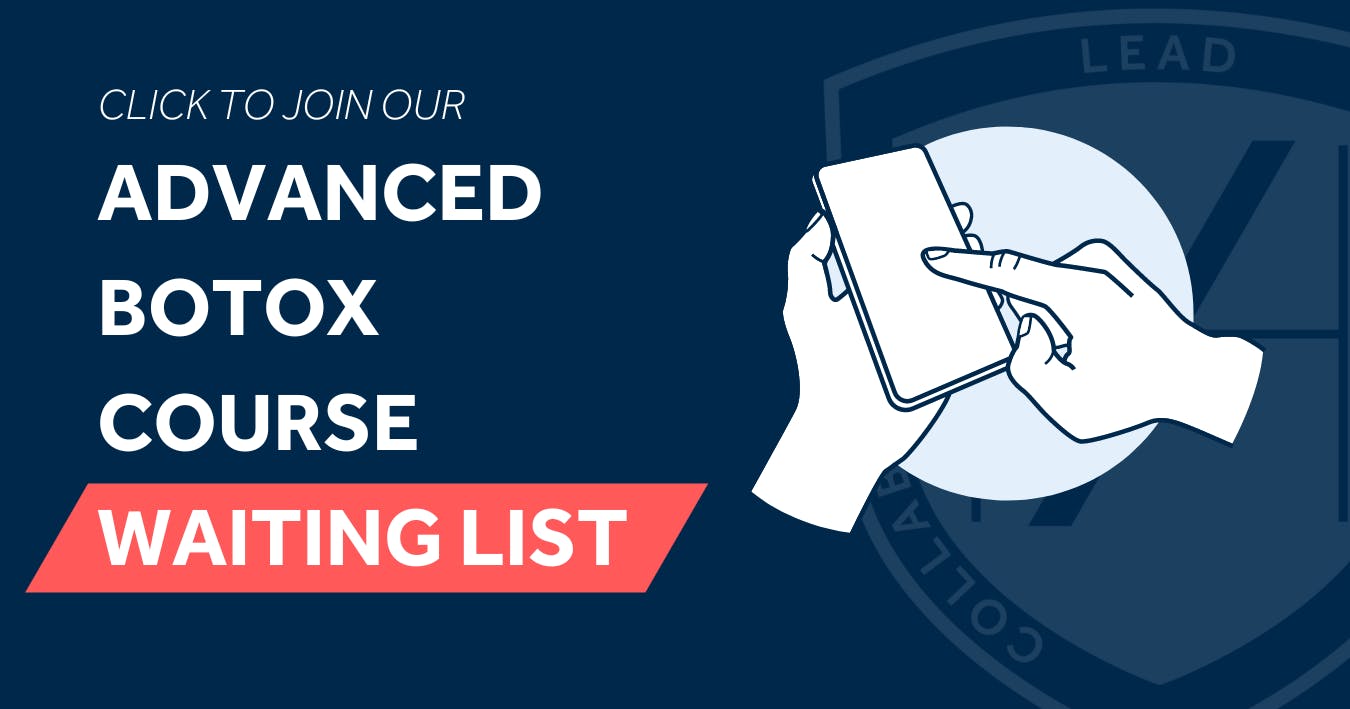Treating a Down-Turned Mouth with Botox
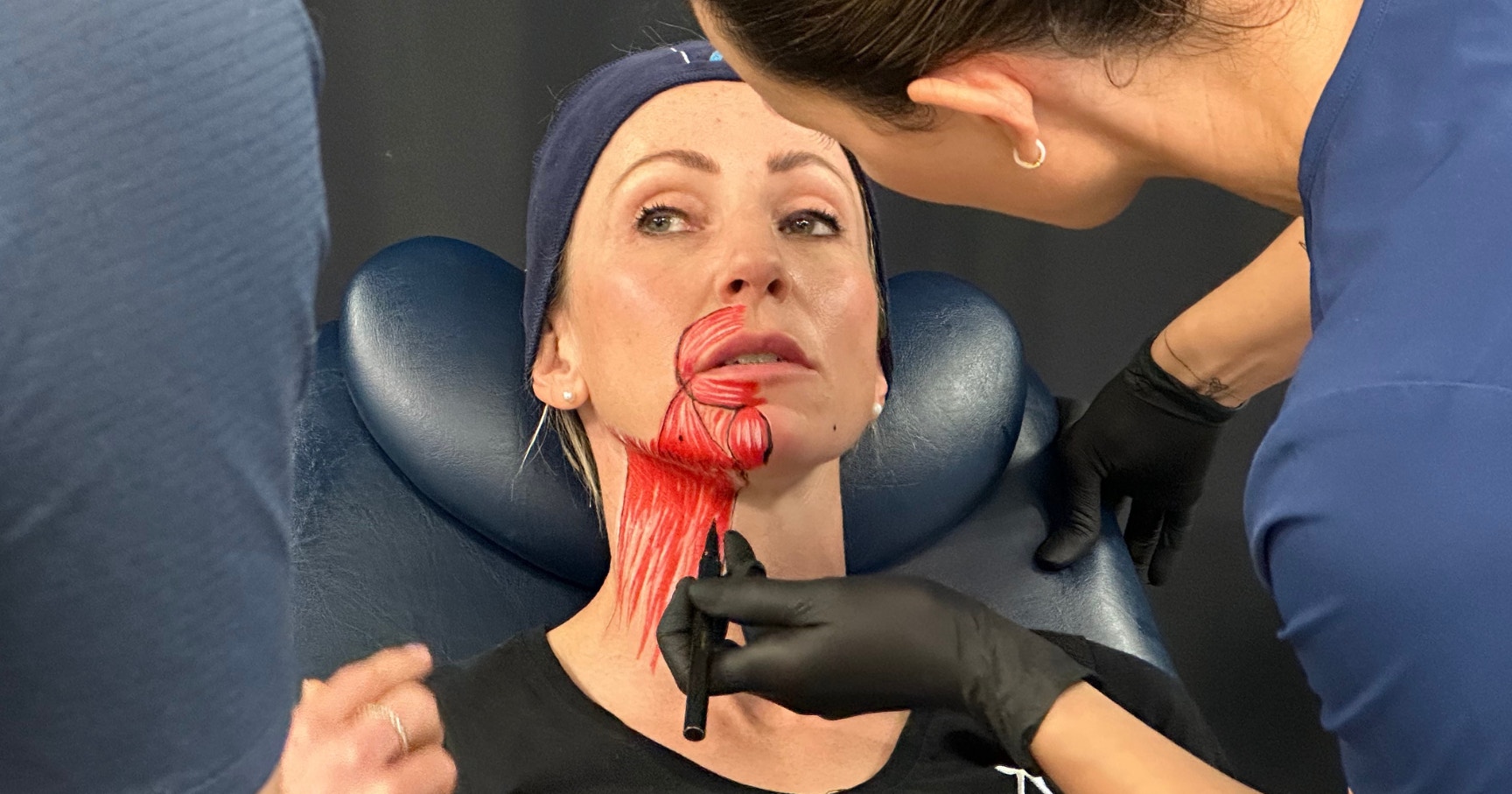
Let’s explore how to treat a down-turned mouth with botox.
Harley Academy clinical trainer and aesthetics specialist, Dr Karla Orsine Murta Dias presents a step-by-step guide to this toxin treatment.
A downward-turned mouth is a feature that some patients may find aesthetically displeasing. Dr Karla explores the multifactorial reasons for their appearance below.
Characterised by drooping at the corners of the mouth, a downward-turned mouth often conveys the emotions of sadness or anger. This is what patients may mention when expressing their concerns, where they feel they look sad or angry when they’re not.
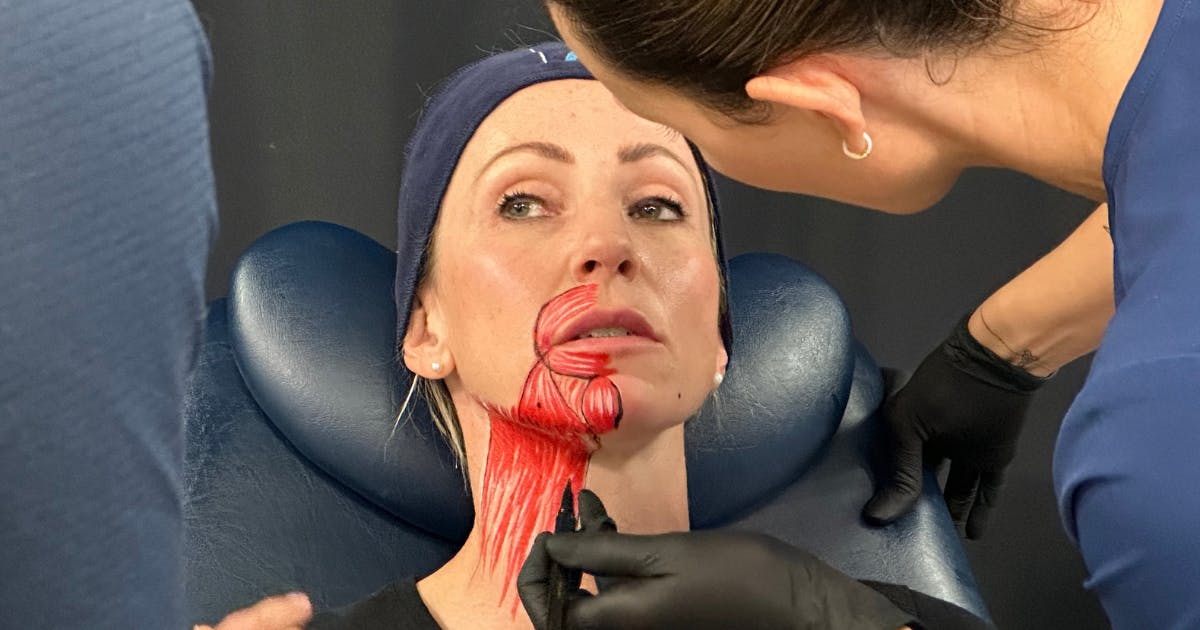
How does a down-turned mouth occur?
Dr Karla notes, “Many individuals seek treatment for a down-turned mouth to achieve a more youthful, relaxed and pleasant appearance.
“A downward-turned mouth is often often perceived as giving a sad or dissatisfied expression. It can form due to genetics, ageing, or the natural loss of skin elasticity and muscle tone over time.”
Patient selection
“When considering this treatment, conducting a thorough patient assessment is essential. This includes their medical history, skin condition, and aesthetic goals,” Dr Karla explains.
Your consultation with the patient is the perfect opportunity for this. Use this time to fully understand their concerns, suitability and explore treatment options.
Toxin administered to the depressor anguli oris muscle is one off licence treatment method. She continues, “Ideal candidates are generally those in good health, with realistic expectations and without contraindications for toxin injections. This includes certain neurological conditions or allergies to botox components.”
When is a patient unsuitable for this treatment?
Dr Karla highlights, “Patients who may not be suitable include those with severe skin laxity as botox alone may not achieve the desired outcome. Also, those with certain medical conditions that could complicate the treatment shouldn’t be treated.”
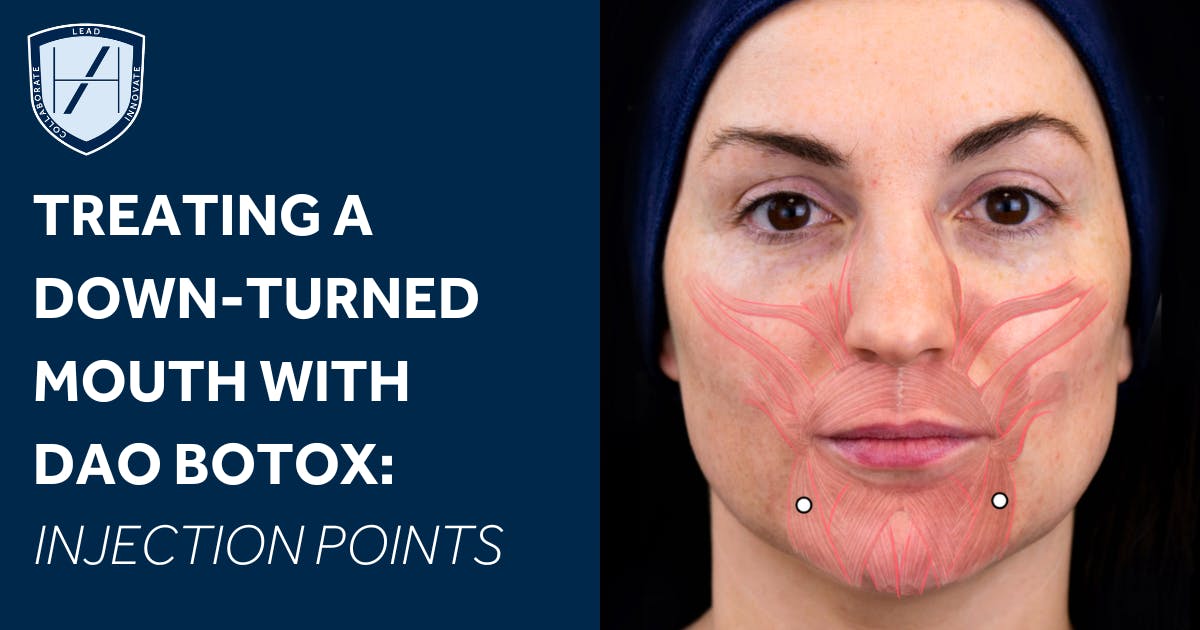
How to treat a down-turned mouth with DAO botox - a step-by-step guide
For treating a downward-turned mouth with botulinum toxin, Dr Karla identifies “precision and understanding of facial anatomy are crucial.”
She outlines the treatment in this easy-to-follow, step-by-step guide with tools, techniques and facial anatomy…
Step 1: Preparation
The first step in the treatment process is preparation. “Ensure the treatment area is clinically clean and you’ve marked up the injection site,” she states.
Step 2: Tools and product
Dr Karla recommends, “A fine needle (ideally the TSK Invisible Needle) and 1ml syringes for injections, 2.5ml syringes for dilution, bacteriostatic saline and toxin, as the product to be injected.
Step 3: Injecting the DAO
She lays out how she would approach and inject a downward-turned mouth:
1. “Identify the depressor anguli oris (DAO) muscle, which contributes to the downward turn of the mouth. This can be done by visualisation by asking the patient to curl their lip down to show their lower teeth and palpation.
2. Administer a small dose of toxin in the DAO muscle of the side being treated
3. The exact dosage and number of injection points vary based on the patient’s facial structure and the extent of correction needed.”
Step 4: DAO botox aftercare
The last and final step of the treatment process is to deliver the botox aftercare advice. “Advise patients on care and any immediate do’s and don’ts to ensure optimal results.”
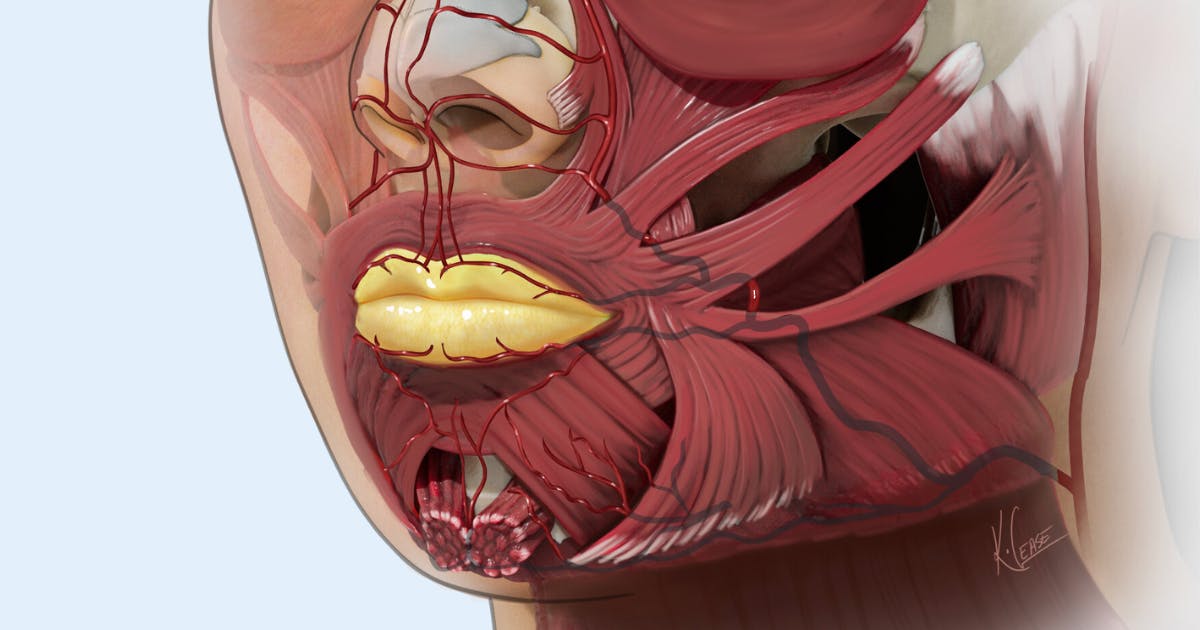
Common mistakes when administering DAO toxin treatments
Making mistakes as a new injector is relatively common and no cause for concern. It’s a natural part of the learning process! Dr Karla specifies some typical mistakes when treating this area.
Overcorrecting
“Using too much botox can lead to an unnatural look or impair function.” It’s best to start with smaller amounts – you can always add more but it can’t be removed.
Incorrect placement
“Injections in the wrong location can affect unintended muscles, altering facial expressions.” This includes smile dysfunction and asymmetry and could lead to undesirable results, creating an unhappy experience for the patient.
Lack of customisation
“Not tailoring the treatment to the individual’s facial anatomy and desired outcomes.” Each patient’s anatomy and aesthetic goal will be different, take this into account when preparing treatment plans. This includes considering realistic expectations.
How long do DAO botox results last?
Dr Karla explains, “botox results typically last between 3-4 months. However, this can vary based on several factors, including the patient’s metabolism, the area treated, and the amount of product used.
“Regular maintenance sessions are needed for sustained results. Lifestyle factors, such as sun exposure and smoking, can also affect the longevity of the results.”
Top tip for review appointments
We also recommend considering the wording around your review appointments. Not every review appointment will lead to a top-up. Therefore, using phrasing such as “top-up appointment” may lead the patient to expect extra botox injections. Words like “review” or “adjustment” are much more neutral and reflect the nature of the appointments more accurately.
Botox side effects and its impact on the smile
While toxin is generally safe, Dr Karla highlights how “some patients may experience common side effects, including:
- Bruising
- Swelling at the injection sites
- Temporary discomfort.”
Toxin smile asymmetry
Dr Karla cautions, “A common concern with this treatment is the potential impact on the patient’s smile.
“When botox is administered correctly, changes to the smile should be minimal. However, if injected improperly, it can affect the muscles used for smiling, leading to an asymmetrical smile or difficulty moving the lips.”
She advises, “When discussing toxin treatment, it’s vital to have an open and honest conversation with your patients about their goals, realistic outcomes, and potential risks or side effects. This ensures they are fully informed and comfortable with the treatment plan.”
Evidence-based aesthetics training in botox treatments
Learning to inject botox is one of the first things you’ll cultivate as a new aesthetics practitioner. Our Foundation Training in Botox & Dermal Fillers is your gateway to aesthetics training. It’ll teach you best practices and give you the fundamental knowledge you need to start injecting.
Botox training in our Foundation course focuses on the upper face, including the glabellar region.
All our Foundation days are held at our City of London flagship clinic at Bank, where you’ll learn in small groups alongside peers. You’ll get to see first-hand live injecting demonstrations and treat your own patients that we source for you. Furthermore, you’ll receive one-on-one mentoring to ensure you get the most out of your botox and filler training.
Coming soon: Advanced Botox Course
If you’re looking to learn more advanced botox injecting techniques and treatments, we have a course coming soon for you! Our Advanced Botox Course allows you to add new toxin treatments to your menu, offering knowledge in:
- Depressor anguli oris (DAO) treatment
- Gummy smile correction
- Masseter botox
- Platysmal bands
- Bunny lines… and more!
Book a call with one of our Course Advisors for more information on which course will best align with your goals.
All information correct at the time of publication
Download our full prospectus
Browse all our injectables, dermal fillers and cosmetic dermatology courses in one document
By submitting this form, you agree to receive marketing about our products, events, promotions and exclusive content. Consent is not a condition of purchase, and no purchase is necessary. Message frequency varies. View our Privacy Policy and Terms & Conditions
Attend our FREE open evening
If you're not sure which course is right for you, let us help
Join us online or in-person at our free open evening to learn more
Our Partners














STAY INFORMED
Sign up to receive industry news, careers advice, special offers and information on Harley Academy courses and services


